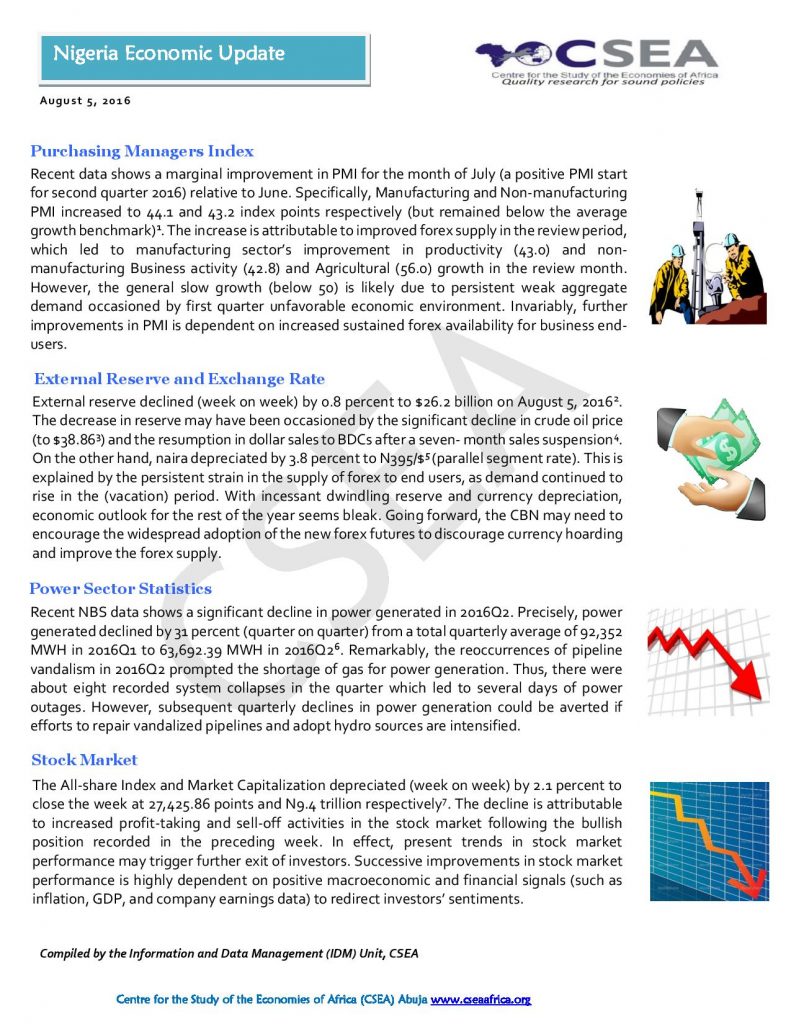Macroeconomic Report & Economic Updates

August 19, 2016
Nigeria Economic Update (Issue 34)
Recent NBS data shows a significant decline in
power generated in 2016Q2. Precisely, power generated declined by 31 percent
(quarter on quarter) from a total quarterly average of 92,352 MWH in 2016Q1 to
63,692.39 MWH in 2016Q2. Remarkably, the reoccurrences of pipeline
vandalism in 2016Q2 prompted the shortage of gas for power generation. Thus,
there were about eight recorded system collapses in the quarter which led to
several days of power outages. However, subsequent quarterly declines in power
generation could be averted if efforts to repair vandalized pipelines and adopt
hydro sources are intensified.
Related
Issues In Fiscal Policy Management Under The Economic Reforms
This paper was produced as part of a larger project which was jointly financed by the UKDepartment for International Development in Nigeria (through its Policy and Knowledge facility)and the Research Committee of the World Bank.
Capital Importation And Gross Domestic Product Growth Rate And Contribution To GDP
Capital Importation: Overall capital imported into the manufacturing sector fell deeply in 2015 and has remained low in 2016H1 on the account of present FOREX issues affecting businesses in the sector
Nigeria Economic Update (Issue 44)
Recently released Nigerias
petroleum imports data, show a significant decline in the quantity and value of
petroleum import products (PMS, AGO and NHK) between 2015 and 2016.
Specifically, value of imports significantly declined year-on-year (January to
April) by 30.4 percent to N571 billion in 2016. The huge decline in
the import of (refined) petroleum products likely reflects the lower
(unrefined) crude oil production/exports. Furthermore, it is likely that the
import of petroleum products could decline in subsequent years; however, this
is dependent on the prospects of the three domestic refineriesbeing refurbished.
